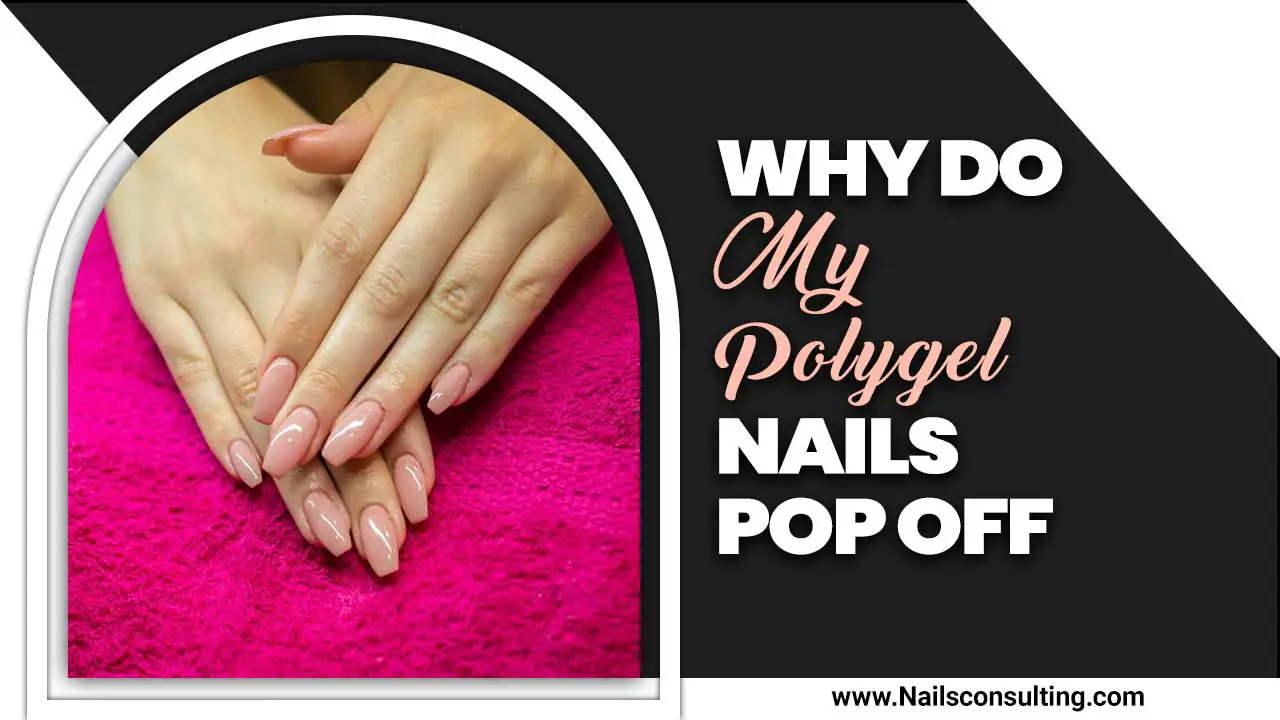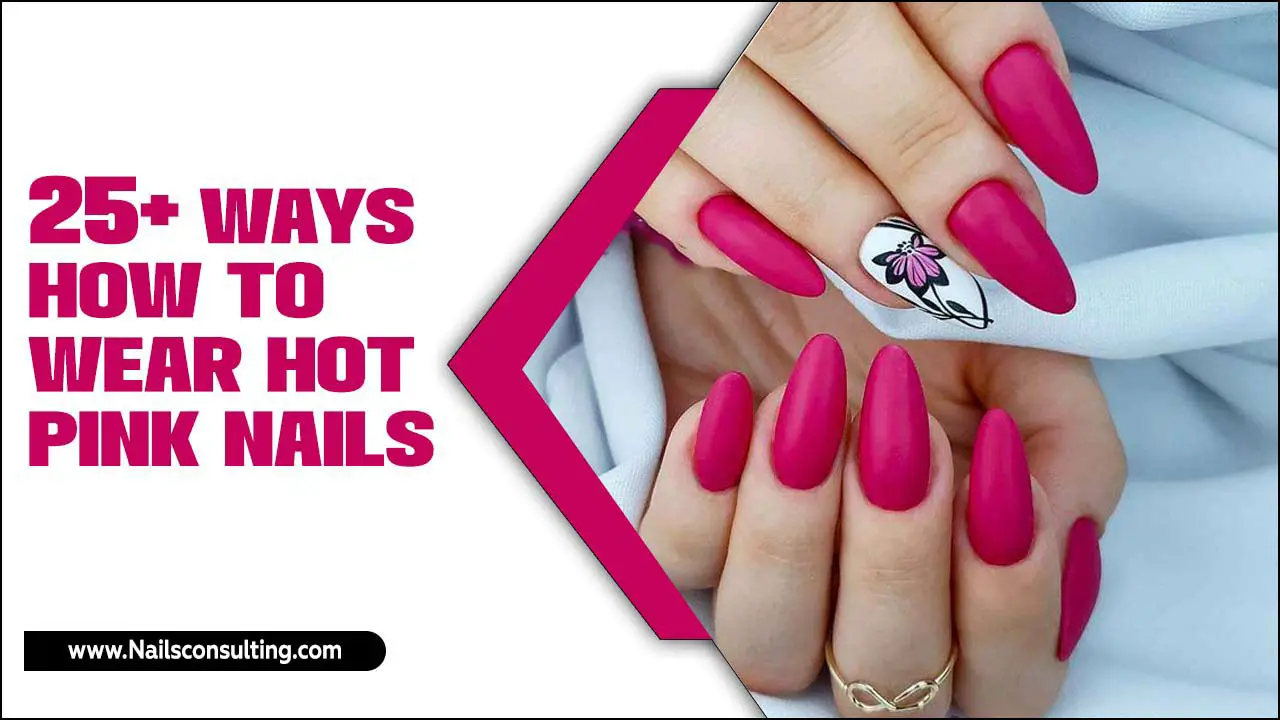Graffiti street-style nail art is achievable for beginners! Learn essential design secrets for bold, expressive looks using simple techniques suitable for DIY manicures, transforming your nails into urban canvases.
Hey nail lovers! Ever look at vibrant street art and wish you could capture that same edgy, dynamic vibe on your fingertips? You’re not alone! Graffiti-inspired nails are a fantastic way to express your personality and bring a pop of color and attitude to your look. But sometimes, trying to recreate those bold lines, splashes, and tags can feel a little… daunting. How do you get that spontaneous, artistic feel without making a mess? Don’t worry, I’m here to break it down for you. We’ll go through everything you need, from the basic tools to the coolest techniques, to create your own graffiti street-style nail art that looks professionally done (but totally DIY!). Get ready to turn your nails into your personal masterpiece!
Here’s what we’ll cover to get your graffiti nail art game strong:
The essential tools you’ll need.
Step-by-step guides for creating key graffiti elements.
Tips for blending colors and adding texture.
Ideas to inspire your next street-style manicure.
Let’s get painting!
Unlocking Graffiti Street-Style Nail Art: Your Beginner’s Guide
Graffiti street-style nail art is all about channeling the energy, color, and raw creativity of urban art. Think bold lines, vibrant splashes, abstract shapes, and playful lettering. It’s less about perfection and more about attitude and expression. This style is incredibly versatile, allowing you to mix and match elements for a truly unique manicure.
The beauty of graffiti nail art is that it embraces a slightly imperfect, hand-drawn feel. This makes it incredibly forgiving for beginners! Instead of striving for flawless symmetry, we’re aiming for dynamic movement and eye-catching designs. Whether you love minimalist sharp lines or wild, abstract splatters, there’s a graffiti-inspired look for you.
Ready to transform your nails into mini works of art? Let’s dive into the secrets of creating killer graffiti street-style nail art that’s totally achievable right at home.
Essential Tools for Your Graffiti Nail Art Toolkit
Before we start splashing color, let’s gather our supplies. Having the right tools makes all the difference and turns what might seem complex into a fun and manageable process.
The Base Coat – Your Canvas Prep
This is non-negotiable for any nail art! A good base coat protects your natural nails from staining (especially with bright, pigmented polishes used in graffiti art) and creates a smooth surface for your designs. It also helps your polish adhere better, making your art last longer.
Nail Polish Colors – Your Graffiti Palette
This is where the fun begins! For graffiti style, you’ll want a range of vibrant colors. Think electric blues, neon pinks, fiery oranges, bright yellows, and deep blacks and whites for strong contrasts. Metallics and neons also work wonderfully to mimic the sheen and vibrancy of spray paint.
A good starting palette might include:
- Black
- White
- A few bright, saturated colors (e.g., electric blue, hot pink, lime green, bright yellow)
- A metallic silver or gold
Detail Brushes – Your Graffiti Pens
These are crucial for creating those signature lines, tags, and fine details. Look for brushes with varying tip sizes for different effects.
- Fine-tip liner brush: For sharp, thin lines and lettering.
- Medium-tip brush: For thicker lines, shapes, and filling.
- Dotting tool: While not strictly a brush, dots are a great abstract element and a dotting tool is perfect for creating them.
You can often find nail art brush sets online or at beauty supply stores. For a more accessible option, you can even use old, clean makeup brushes with stiff bristles (trimmed to a fine point) or toothpicks for simpler designs.
Top Coat – Sealing Your Masterpiece
This is your protective shield. A good top coat seals in your design, adds shine, and prevents chips. A quick-dry top coat is a lifesaver for impatient artists!
Optional Extras for Added Flair
- Dotting tools: For creating perfect dots, which can mimic paint splatters.
- Thin striping tape: For creating clean, sharp lines and geometric effects.
- Stencils: If freehand isn’t your jam, stencils can help with specific shapes or letters.
- Acrylic paints: Often more opaque and easier to blend than polish for certain effects, especially for beginners learning to control lines. If using acrylics, you’ll also need a palette to mix them on and water for cleanup.
- Nail polish remover and cotton swabs: For cleaning up mistakes – essential for any nail artist!
DIY Graffiti Nail Art: Essential Design Secrets & Techniques
Now for the exciting part! Let’s break down how to create those iconic graffiti elements. Remember, the key is to have fun and embrace the artistic process.
Secret 1: Master the Bold Line
Sharp, defined lines are a hallmark of graffiti. This is where your liner brush comes in handy.
- Prep your nail: Apply your base coat and let it dry completely. Then, apply your base color (often black or white for contrast) and let it dry thoroughly.
- Dip your brush: Load your fine-tip liner brush with polish. Don’t overload it. Wipe off excess on the side of your polish bottle.
- Draw your line: Hold the brush at a slight angle to the nail and use a firm, steady hand. Start from one edge of the nail and draw a straight or slightly curved line across. For a more dynamic look, try varying the pressure to create thinner and thicker strokes within a single line.
- Practice makes perfect: Try drawing simple lines, zig-zags, or wavy patterns. Don’t be afraid to make mistakes; a cotton swab dipped in nail polish remover is your best friend for quick touch-ups.
Pro Tip: For super sharp lines, try using nail striping tape. Apply the tape where you want your line, paint over it, and peel it off while the polish is still slightly wet for a clean edge.
Secret 2: Create Dynamic Splatters and Drips
These add an effortless, energetic feel. They mimic the look of spray paint or drips from wet paint.
Splatter Technique:
- Get ready: Have your base color dry. Choose a contrasting color for your splatters.
- Use a brush or toothpick: Dip the tip of a stiff brush (like a spare liner brush or even an old toothbrush) into the polish.
- Flick or tap: Hold the brush a short distance above your nail and flick the bristles with your finger, or tap the brush handle against another object (like your finger or a paper towel) to release tiny droplets of polish onto the nail.
- Control the chaos: Experiment with distance and force to achieve varying splatter sizes. You can also use a dotting tool to place individual dots that look like splatters.
Drip Technique:
- Start at the top: With your liner brush loaded with polish, place a small blob of color near the cuticle area or the edge of your nail.
- Pull it down: Gently pull the polish downwards towards the tip of the nail, creating a “drip” effect. You can make thin, wispy drips or thicker, more substantial ones.
- Vary the lengths: Make some drips long and others short for a more realistic, random look.
External Resource: For more inspiration on abstract painting techniques that translate well to nail art, exploring resources on abstract expressionism can be very helpful. Many museums and art history sites offer insights into techniques like action painting, which is all about spontaneous movement and color application.
Secret 3: Layering Colors for Depth
Graffiti often involves multiple layers and textures. You can achieve this on your nails too!
- Start with a base: Paint your nails with one or two base colors. Let them dry completely.
- Add contrasting elements: Use your liner brush or a dotting tool to add lines, dots, or shapes in a contrasting color over the base.
- Build texture: For a spray-painted look, use a sponge. Lightly dab a makeup sponge into polish and then gently dab it onto parts of your nail to create a textured, diffused effect. You can layer lighter colors over darker ones, or vice versa, to build depth.
- Don’t overdo it: Aim for 2-3 layers of color or design elements. Too many can make the nail look cluttered.
Secret 4: Incorporate Lettering and Symbols
This is where you can get personal. If you want to try lettering, start simple.
- Block letters: Try drawing thick, block-style letters first. They are more forgiving than script.
- Outline first: You can draw the outline of a letter in one color and then fill it in with another.
- Focus on impact: Alternatively, focus on just one or two impactful letters or symbols that mean something to you.
- Use stencils: If freehand lettering feels too challenging, use adhesive nail stencils available online or at beauty stores.
For Simpler Lettering Practice: Try writing on paper first with your nail art brush or a pen to get a feel for the strokes. This helps build muscle memory without the pressure of being on your nail.
Secret 5: Embrace the Abstract and Geometric
Not all graffiti is about words and tags. Abstract shapes, drips, and geometric patterns are equally effective.
- Random shapes: Use your brushes to create freeform shapes – squares, circles, triangles, or even just abstract blobs of color.
- Lines and grids: Use striping tape or a thin brush to create intersecting lines, grids, or broken patterns.
- Color blocking: Paint sections of your nail in different vibrant colors.
Graffiti Street-Style Nail Art Design Examples
Here are a few ideas to get your creative juices flowing. Mix and match these elements for endless possibilities!
The Classic Tag
A black or white base with a bold, stylized “tag” or signature in a contrasting neon color. Add a few small splatters around the tag for extra impact.
Neon Burst
Start with a black base. Use a bright neon polish and a fine-tip brush to draw sharp, angular lines radiating from the center or a corner of the nail. Add a few tiny white dots to mimic spray-paint highlights.
Color Splash
A white or neutral base. Use multiple bright polishes on a sponge to dab color onto the nail, creating an abstract, watercolor-like splash effect. Cover the entire nail or just a portion.
Geometric Edge
Use striping tape to create sharp geometric shapes – triangles, squares, or diagonal blocks. Fill them in with different vibrant colors. Once dry, add a few freehand lines or dots over the top.
Dripping Art
A bold color base. Using a contrasting color and a liner brush, create drips that extend from the free edge or cuticle down the nail. You can even have them overlap for a more chaotic look.
A Quick Guide Table: Graffiti Elements & Tools
This table summarizes the key graffiti elements and the best tools to use for achieving them.
| Graffiti Element | Key Tools & Techniques | Tips for Beginners |
|---|---|---|
| Bold Lines | Fine-tip liner brush, Striping tape | Steady hand, practice on paper first, simple shapes like zig-zags. |
| Splatter/Drip Effects | Stiff brush (toothbrush/old liner), Dotting tool, Polish remover for cleanup | Control the “flick” or “tap” distance, vary drip lengths, don’t aim for symmetry. |
| Layering/Texture | Makeup sponge, Multiple brushes, Stencils (optional) | Dab color on sponge for diffusion, alternate colors for depth, keep to 2-3 layers. |
| Lettering/Symbols | Fine-tip liner brush, Stencils (optional) | Start with block letters, practice strokes on paper, focus on one impactful element. |
| Abstract Shapes | Various brushes (fine-tip, medium), Dotting tool | Embrace imperfection, play with geometric forms, freehand as much as possible. |
Maintaining Your Graffiti Street-Style Nails
Once you’ve created your masterpiece, you want it to last!
- Apply a good top coat: This is your protective barrier. Make sure to cap the free edge of your nail with the top coat to seal everything in.
- Be gentle: Avoid using your nails as tools. Don’t scrape, pry, or pick at things.
- Moisturize cuticles: Dry cuticles can lift polish. Apply cuticle oil daily.
- Wear gloves: When doing chores like washing dishes or cleaning, wear rubber gloves to protect your nails from harsh chemicals and water.
- Touch-ups: Minor chips can sometimes be touched up with a bit of polish and a clear top coat.
For more on nail care best practices, the American Academy of Dermatology provides excellent resources on healthy nail habits, which are fundamental for any nail art enthusiast.
Frequently Asked Questions (FAQ)
Q1: What are the easiest graffiti nail art designs for beginners?
For absolute beginners, focus on simple elements like bold lines, random splatters using a brush or toothpick, and basic geometric shapes created with striping tape. You could also try just painting two contrasting colors on alternating nails.
Q2: How do I clean up mistakes when doing nail art?
Always keep nail polish remover and a pack of pointed cotton swabs (or a detail brush dipped in remover) handy. Gently correct any misdrawn lines or smudges immediately before the polish fully hardens.
Q3: Can I use regular acrylic paint for graffiti nail art?
Yes, you can! Water-based acrylic paints (found in craft stores) can work well for nail art, especially for achieving opaque lines and blending effects. However, ensure you use them over a sealed base coat and always finish with a strong top coat to protect the paint and your natural nail. Make sure they are non-toxic and safe for skin contact.
Q4: How long does graffiti street-style nail art typically last?
With a good base coat, careful application, and a strong top coat, your graffiti nail art can last anywhere from 5 to 10 days, depending on your daily activities and how well you care for your nails.
Q5: What colors are best for achieving a true graffiti look?
Graffiti art is known for its boldness, so vibrant, saturated colors are key. Think neons, electric blues, hot pinks, bright yellows, and oranges. Black and white are essential for contrast and creating sharp outlines. Metallics also add a great urban sheen.
Q6: My lines aren’t sharp. What am I doing wrong?
There are a few reasons this might happen. Ensure your liner brush has a fine, pointed tip. Don’t overload the brush with polish. Make sure your base polish is completely dry before drawing lines. For the sharpest lines, consider using nail striping tape.
Q7: How do I make my nail art look less “messy” and more “artistic”?
The beauty of graffiti is its spontaneous energy, so a little “mess” is part of the charm! The key is intentionality. Even splatters or drips should be placed with some thought – think about where they would naturally fall or how they add to the overall composition. Practice will help you get a feel for balancing controlled chaos with artistic intent.
Conclusion: Unleash Your Inner Urban Artist!
There you have it – the essential secrets to rocking graffiti street-style nail art! We’ve covered the tools, the techniques, and the inspiration to get you started on your own urban canvas.
Remember, graffiti art is about expression, attitude, and creativity. Don’t be afraid to experiment with colors, lines, and textures. Let go of perfectionism and embrace the fun, bold, and unique vibe that this style brings. Whether you’re adding a single graphic element or going all-out with layered designs, your nails are your personal billboard. You’ve got the skills and the secrets now. So grab those polishes, brushes, and get ready to make a statement – one nail at a time!
Which graffiti element are you most excited to try first? Let me know in the comments below!




